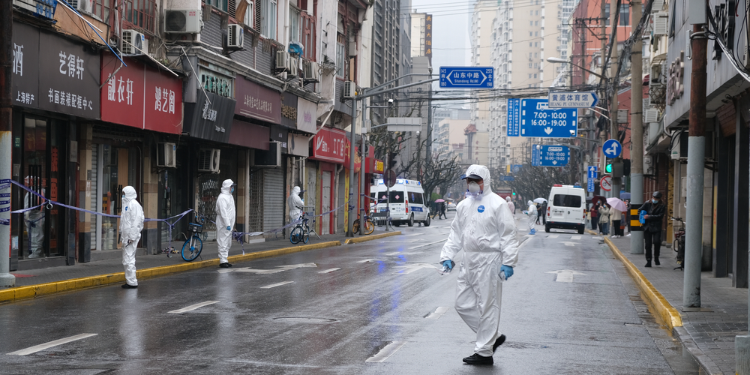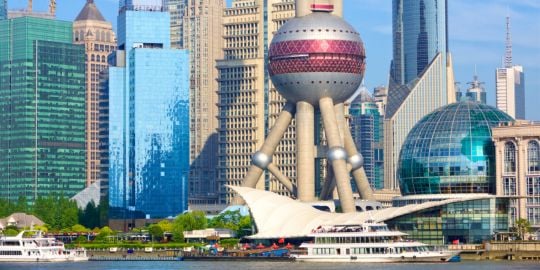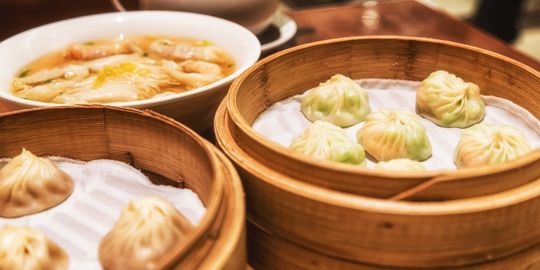China loosens the screw on the Covid issue
Ever since Beijing finally released its control, international organizations have been welcoming the government's decision. International Monetary Fund (IMF) President Kristalina Georgieva has noted a crucial step forward for a country that, since March 2020, has been locked into a zero-covid strategy that had long shown its limits. For Mathias Cormann, Secretary General of the Organization for Economic Cooperation and Development (OECD), and Ngozi Okonjo-Iweala, Director General of the World Trade Organization (WTO), the easing of COVID restrictions is a positive signal to the global economic community.
Only a few days ago, Xi Jinping was still adamant in his conviction that his zero-COVID policy was the best. Such a policy was designed as a bulwark against Western countries, which were repeatedly rattled by the COVID waves and thus considered too lax in their prevention measures. However, this was without considering the population's exasperation.
China saw a sharp rise in COVID cases at the beginning of the month, with more than 40,000 new contaminations over 7 days, including a peak at 62,000 cases on December 2, compared to 1,000 cases last month. Since then, infections have dropped significantly. While 92.4% of the population has been vaccinated with only one dose, 90.2% was fully vaccinated with two shots. This is a high vaccination rate, but contamination kept rising despite the drastic lockdowns. The Chinese population protested in the streets against this strategy.
On December 7, Beijing finally conceded. It put an end to systematic and large-scale PCR tests, allowed people to isolate themselves at home in case of benign or asymptomatic Covid, and reviewed its lockdown procedures. Before that, contact cases were placed in a quarantine center, even though they were asymptomatic. The Chinese authorities have also abolished the requirement of a negative PCR test of less than 48 hours to travel from one Chinese province to another. There are no more tests on arrival either.
Vaccination of the elderly: A lost battle?
According to experts, the low vaccination rate is a more significant issue for the elderly. Less than 70% of people aged over 60 are fully vaccinated against COVID. And the older they get, the worse the vaccination rates. One-third of Chinese over 80 years old are not fully vaccinated, with most preferring traditional medicine. Local authorities no longer know exactly how to encourage them to be vaccinated. Unlike other countries, where vaccinating the elderly was the starting point of the immunization campaigns, China first focused on workers in "high-risk" sectors. For the elderly, there was no obligation to vaccinate, but incentives like vouchers, free food, etc., were deemed ineffective in the end. The zero-COVID policy has paradoxically made people even more suspicious of vaccines: “What's the point of getting everyone vaccinated when most people are confined?”
Besides, Chinese vaccines are being considered with great caution by other categories of the population. The contaminated milk affair in 2008, where some 300,000 children were hospitalized, and the poor crisis management by the state (accused of hiding information) are still fresh in people's minds. Other health scandals have also become part of the collective memory leading people to mistrust Chinese products. And the vaccine is no exception to the rule.
Compared to mRNA vaccines, Chinese ones are no match. However, Beijing continues to ban non-Chinese vaccines, getting the international community concerned, although they have studies to back it up. Chinese vaccines have only 60% efficacy, while mRNA vaccines are more than 80% effective. And when it comes to Omicron, the disparities are more remarkable. When confronted with such data, the elderly are even less inclined to be vaccinated. In fact, the government got tangled in its own mess.
"Enough is enough!"
The expression of exasperation after nearly three years of relentless zero-COVID policy can be read on almost everybody's face in China. Everyone expected the rules to be relaxed after the 20th Congress of the Communist Party, which was held from 16 to 22 October last. Instead, the government took a series of measures, each more restrictive than the previous. Citizens complained about the massive, excessive, and illogical control by the inspectors.
At the beginning of October, some anonymous people dared to display banners against the government. Others seized the opportunity to shout their hostility towards a regime considered disconnected from reality. The protest spread from city to city and was soon to take on an unprecedented scale following the November 24 blaze in Urumqi (northwest of the country), a fire that caused the death of 10 people. The city had been locked down for 100 days. The inhabitants of Urumqi protested in the streets, demanding the end of COVID restrictions, and this movement was followed in cities like Chengdu, Guangzhou, Wuhan, Shanghai and Beijing.
The government was faced with an impossible equation, overwhelmed by the magnitude of the movement. It had always been believed that the population would grumble from afar but would follow, as it usually does. For Xi Jinping, Beijing's strongman, giving up on zero-Covid meant losing face in front of his people and the world, hence his determination not to back down, let alone give in. But stubbornly sticking to the zero-Covid policy also meant that the unprecedented protests would become even harsher.
The underground restaurants' rebellion
On Xiaohongshu (the Chinese equivalent of Instagram), there were rumors of places to eat in an underground restaurant. Some informal news got around first, relayed on social networks, then word of mouth rounded off the job. Although restrictions were relaxed (businesses are starting to reopen), many restaurants remain closed. So for people to have a relaxing evening, it was necessary to enter a rebellion.
While Beijing now recognizes that lockdowns are no longer necessary, the inhabitants are getting tired of this game of hiding to have a drink, meet with friends, or watch a World Cup match. Clandestine restaurants are usually hidden at the far end of parking lots, behind one or two premises, and often have no windows with just a thin stream of light - just enough to enjoy an evening without masks illegally.
For others, the resistance is done at home. To escape the quarantine, a growing number of residents decided not to provide any more information to the control agents and to self-isolate. Now that the government has officially authorized self-isolation at home, residents hope that the COVID restrictions will soon be a memory.
Are Covid restrictions coming to an end?
Let's not play fool! Xi Jinping has only loosened the screw, but the zero-Covid policy is still in place. There is also the credibility of both the CCP and its leader at stake, so the restrictions are likely to remain for a while.
Then there is the risk o China facing an unprecedented COVID wave. Unlike other countries, confronted with multiple waves and their variants, a large part of the Chinese population, including many senior citizens, has never come across COVID, let alone a variant.
Experts believe that the highly contagious and globally prevalent Omicron variant is likely to shake up the Red Dragon. To back this theory, researchers have been taking the cue from Hong Kong. At the end of the zero COVID policy in March, the Chinese province suffered a particularly deadly Omicron wave (more than 10,500 deaths).
In China, there could be 2 million victims, and this is quite worrisome for the government. Besides, we are currently in the festive season, and the inhabitants want to get together at parties, public gatherings, restaurants, etc., whether it's allowed or not. So here's the million-dollar question. How will they get out of their zero-COVID policy without human drama? In fact, this will be a new challenge for Xi Jinping and his government.
















